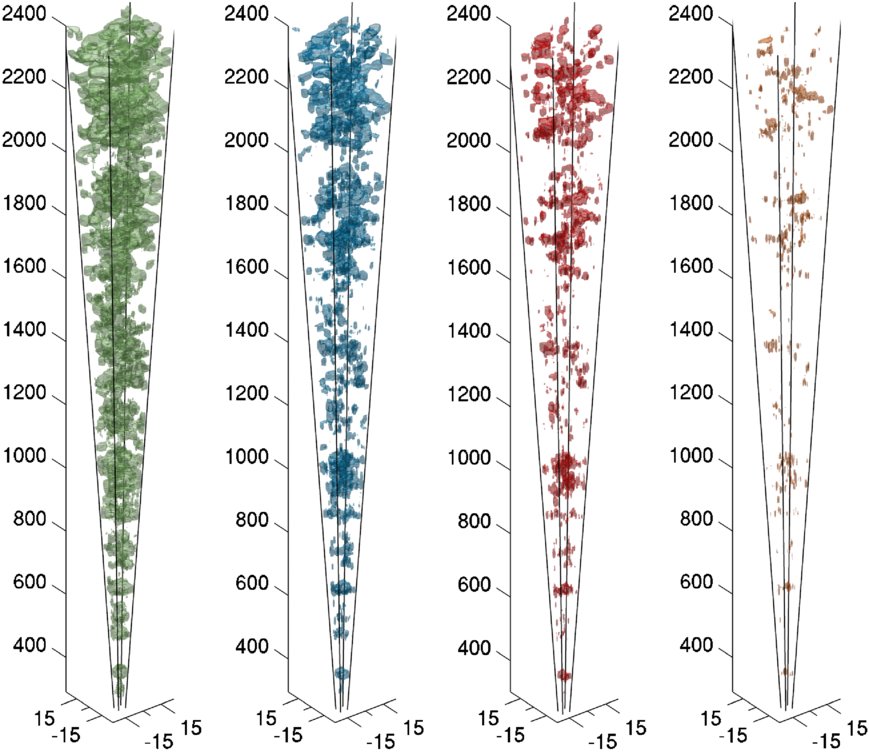zCOSMOS
The Project
zCOSMOS is an approved Large Program on the ESO VLT. 600 hours of observation are used to carry out a major redshift survey with the VIMOS spectrograph on the COSMOS field to yield spectra for:
- approximately 28,000 galaxies at 0.2 < z < 1.2 selected to have I_AB <
22.5 at a sampling rate of 70% - approximately 12,000 galaxies at 1.2 < z < 3 with B_AB < 25 and
chosen by two colour-selection criteria (B-Z) vs. (Z-K) and (U-B)
vs. (V-R) at a sampling rate of 70%
The Science
The primary goal of COSMOS is to understand how galaxies and AGN evolve over cosmic time in the context of their environment - on all scales from groups up to the large scale structure of filaments and voids. The power of COSMOS stems from:
- the very large sample of galaxies and other classes of object
- the representative volumes at all redshifts
- high resolution HST images
- complementary imaging data at X-ray, ultraviolet, optical, near- and
mid-infrared and radio wavelengths
The specific goals of zCOSMOS are to:
- define the large scale structure defined by the galaxies out to redshifts
z ~3 - define and characterize group environments down to M ~10^12.5 at
redshifts out to z~1 and in richer environments out to z ~3 - use spectral diagnostics (e.g. star-formation rate, reddening, chemical
abundance of stars and gas) to characterize individual galaxies and
populations - identify X-ray and radio sources and other classes of object such as
AGN down to I_AB ~25.
The Team
The zCOSMOS team comprises over 70 scientists in at least 18 institutions in Europe, the USA and Japan. The main institutes involved are in Zurich, Marseille, Milan, Bologna, Munich, Toulouse as well as ESO itself in Munich and Chile. The team has several categories of member, which can briefly be explained as follows:
(a) Scientific Steering Group: The relatively senior people who are responsible for making sure that enough resources are devoted to the project to make it a success or who are absolutely central to its success e.g. by providing input photometric catalogues. There is at least one from each of the major data processing nodes.
(b) Core workers: These are the additional, usually more junior, people who are actually doing a lot of the work on the data itself. Together with (a) they make the project possible and thus acquire rights to appear as authors on papers and to participate in small groups that lead the main scientific analyses.
(c) Enabling Associates: These are people, additional to the above, who have made zCOSMOS possible less directly either through their major roles in VIMOS and the VVDS or in the global COSMOS collaboration. They have a clear moral right to participate in the project but have data rights which are naturally a little weaker than the above. They may not appear on every single paper etc.
(d) Associated Scientists: These are people who have made particular contributions to the project or who have particular scientific interests or analysis skills. As with (c) these individuals have weaker data rights.
Naturally, people may migrate from one category to the other as the project progresses, depending on their involvement in the work.
For convenience, there are three email exploders set up:
- Scientific Steering Group:
- Core Team:
- Associated Scientists (c) and Enabling Associates (d):
Members of each group should be able to post emails to the other members - others will require approval of a moderator.
